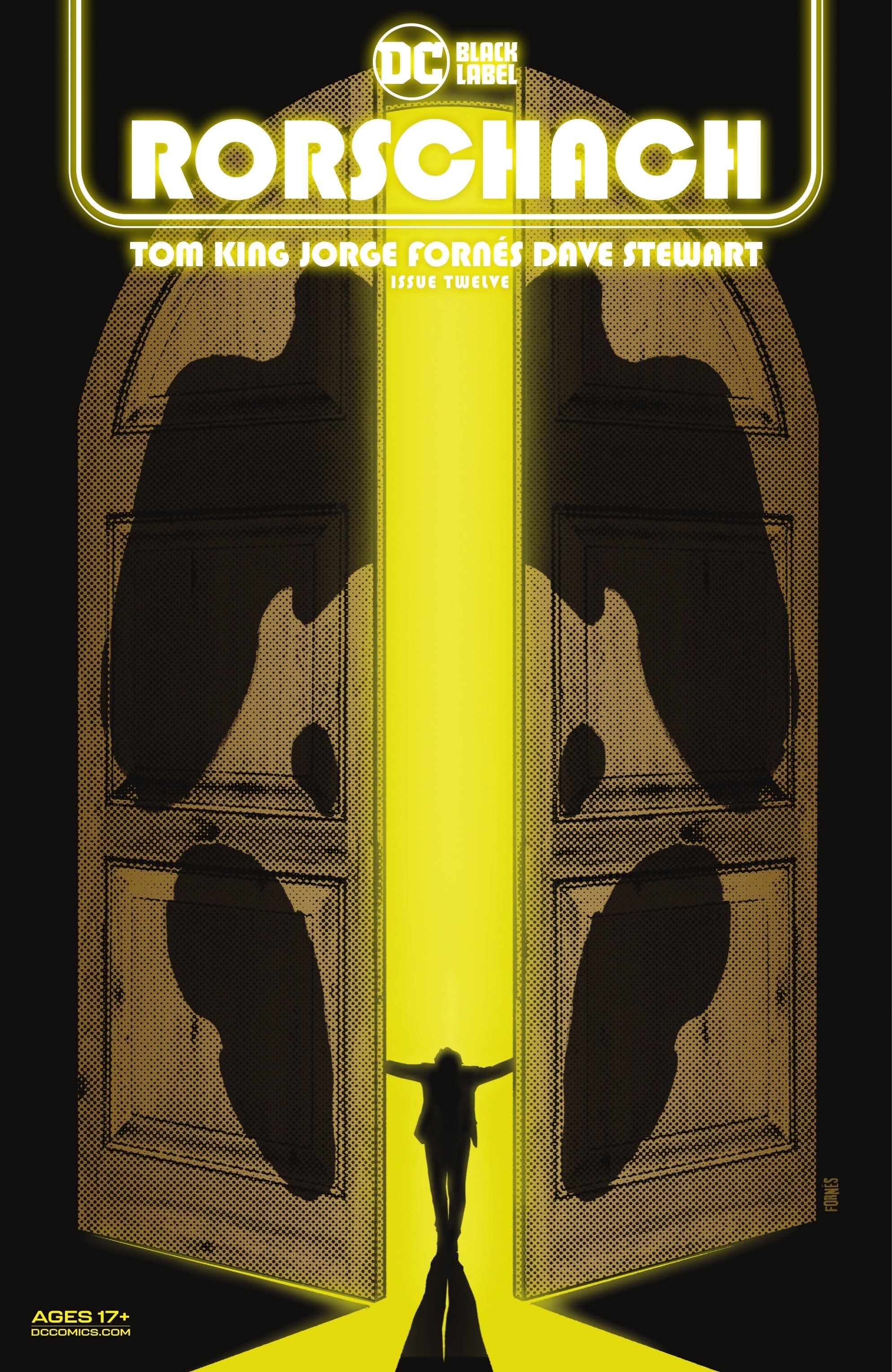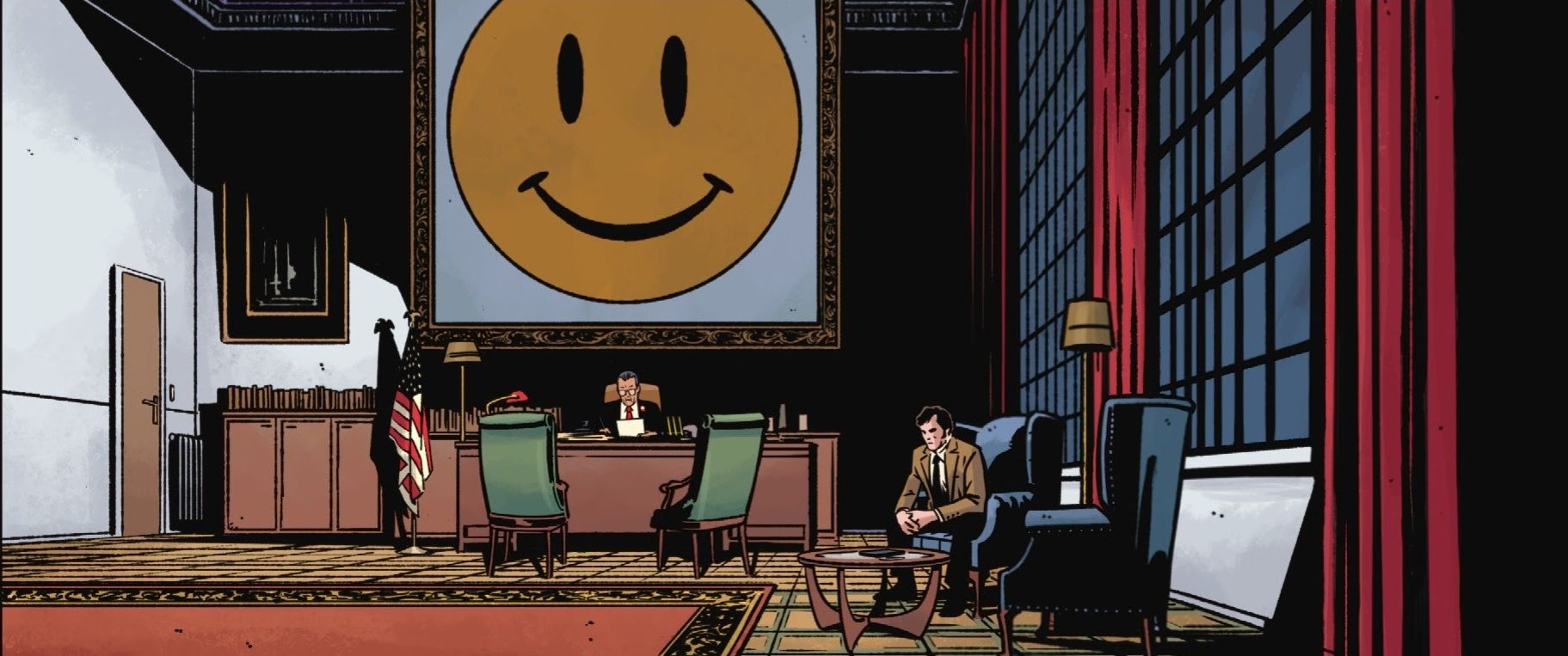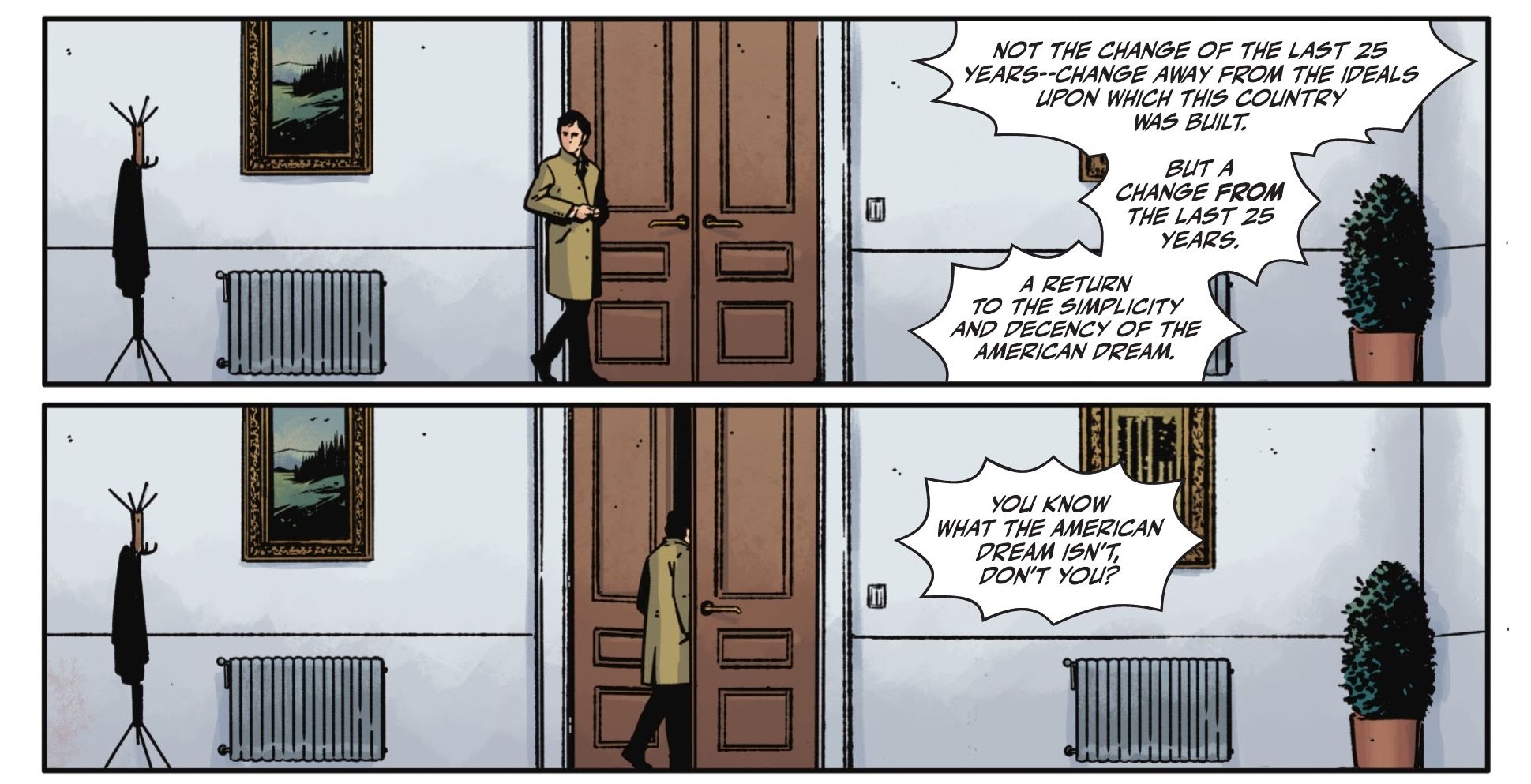The Sequel to Watchmen Comes to a Pitch-Perfect Conclusion in Rorschach #12
- WRITER
- Tom King
- Artist
- Jorge Fornés
- Letterer
- Clayton Cowles
- Cover Artist
- Jorge Fornés
- Publisher
- DC
- Price
- 4.99
- Release Date
- 2021-09-14
- Colorist
- Dave Stewart
The modern-day sequel to Alan Moore, Dave Gibbons, and John Higgins' Watchmen, Rorschach took a nameless investigator on a bizarre, ever-changing journey that's unveiled political corruption, put him face-to-face with famous cartoonist Frank Miller, and underscored the enduring and complex legacy of the vigilante Rorschach. Now writer Tom King and artist Jorge Fornés bring the investigation to a fitting close in DC Black Label's Rorschach #12 -- a haunting but predictable conclusion to the compelling series.
Rorschach has revolved around the attempted assassination of Governor Turley, a candidate for the 2020 presidential election hoping to ignite a "Conservative Revolution." One of the would-be assassins, an eccentric cartoonist named Wil Myerson, wore a Rorschach mask, which along with a bizarre tape recording prompts the nameless investigator hired by the Turley campaign to pursue a theory that the vigilante may still be alive or that his spirit may live on in other people. After following up on every lead, Rorschach #12 finds the investigator heading to Governor Turley's office to share his findings with the politician.
Throughout Rorschach, Tom King has filled pages with red herrings and surprises to keep readers guessing. But, the events of Rorschach #12 are hardly shocking in the context despite the issue that preceded it which went to great lengths to establish the investigator's state of mind and hint at the severity of his upcoming actions. In some ways, the events of the final issue are a foregone conclusion. But, King's knack for pacing plays with the reader's expectations even if it doesn't subvert them. A palpable sense of dread builds throughout the issue, making its violent climax feel visceral in spite of its predictability.
King also goes to great lengths to include numerous references to the original Watchmen in this final issue. These allusions tie the world to the source material in a way that makes the ending all the more resonant, illustrating the cyclical nature of violence and politics while paying homage to Alan Moore and Dave Gibbons' work that has inspired generations of comic creators. Though, given Alan Moore's contentious relationship with DC and the comic book industry as a whole, the tributes to his work sometimes feel insincere. Moore has been very vocal about his disdain of the numerous Watchmen adaptations and spin-offs DC has published over the years, so the existence of yet another spin-off feels inherently disrespectful and the numerous easter eggs risk distracting from the actual content of the Rorschach series.
Every page Jorge Fornés draws in Rorschach #12 is carefully composed to control the pace at which the reader moves through the final story. Together with King's sparse but powerful dialogue, Fornés sets an eerie, grim tone that gives the dramatic conclusion a great deal of gravity. Rather than dwelling on the action, he looms on its consequences, a technique that mirrors the entire structure of the series and reminds the reader that this is more of a detective story than a superhero adventure. Dave Stewart's colors add to the somber, but menacing atmosphere and help to punctuate some of the more emotionally intense moments.
Rorschach #12 is an excellent conclusion to the series, which has explored an intriguing and thought-provoking mystery. King, Fornés, and Stewart all enhance the quality of one another's work to present the haunting final chapter of a story that feels both urgently contemporary and timeless. Readers who have followed the series closely aren't in for any last-minute surprises, but they are sure to enjoy a satisfying and thoughtful ending.



